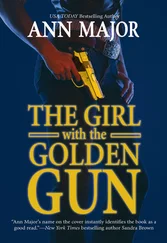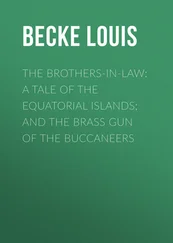In one of the most compelling studies of the impact of firearm proliferation, Dr. Arthur Kellermann, an emergency-medicine physician at Emory University, and associates from the Universities of Washington and British Columbia studied the rates of homicide and assault in Seattle and Vancouver from 1980 through 1986. The cities are close to each other. They have similar economies and similar geophysical locations. Their populations have a similar demographic profile. Presumably they watch the same movies and many of the same TV shows. During the study period, they also had similar assault rates. They differed markedly, however, in the degree to which they regulated access to firearms. Vancouver allowed gun sales only to people who could demonstrate a legitimate reason for having a firearm. Seattle had few regulations. The researchers found that attackers in Seattle were almost eight times more likely to use a handgun than those in Vancouver. Seattle’s homicide rate, moreover, was five times higher, with handgun-related killings accounting for most of the difference.
The proliferation of guns continues, however. In the 1980s gun manufacturers feared they might have sold so many guns to American consumers that they had sated the market. Indeed, slack demand helped cause the failure of Charter Arms and drove Colt’s Manufacturing into bankruptcy. Gunmakers, cheered on by the National Rifle Association, sought to improve their prospects by pitching guns—handguns in particular—as the only sure way to protect ourselves against crime. The Los Angeles riots of 1992 proved a godsend. Millions of TV viewers watched a white truck driver beaten senseless by black marauders. They saw Korean businessmen, the new heroes of American enterprise, brandishing guns to guard their inner-city businesses in scenes that evoked our most favorite Wild West myths: a good man standing alone, gun drawn and squinting into the setting sun, waiting for nightfall and the next attack of the barbaric hordes, be they Indians, cattle rustlers, train robbers, or, in this modern transmogrification, black gang-bangers in the ghetto. The most striking images and the most beneficial to the gun marketers were those scenes played over and over again of a group of L.A.’s Finest retreating posthaste to their police cars and leaving the good settlers of Indian country to their own devices.
The NRA was quick to extract the obvious message of the riots: you better get a gun because no one else is going to protect you. A 1992 recruitment ad for the NRA featured blocks of text against photographs of looting, burning, and destruction. “WHAT WILL IT TAKE?” the ad asked. “Must your glass be shattered? Must your flesh and blood be maimed? Must your livelihood be looted? Must all you’ve built be torn down? Must your once-proud nation surrender to more gun-control experimentation while its citizens tremble behind deadbolts and barred windows?… What will it take before you stand up with the one group that will stand for no more?… We warned gun laws would fail, and they have. We said gun control is wrong, and L.A. PROVES IT.”
The newest targets for this sales pitch are women, considered especially receptive, the argument goes, because so many now are single heads of households and increasingly hold important jobs that require late hours and lots of travel. Gun magazines, such as the American Rifleman , published by the NRA, and Women and Guns , published by the Second Amendment Foundation, routinely carry stories about armed women who killed, wounded, or at least scared off their attackers. Such testimonials may require close examination, at least in light of one example printed in a 1989 issue of American Rifleman . The story described how a female cabdriver in Phoenix, Arizona, picked up a customer early one morning, only to have him hold a broken bottle to her throat and force her to drive to a deserted area. He took $70, then pushed the woman from the cab. “When her assailant ordered her to crawl in the dirt, [she] responded by emptying her pocket semiauto into him,” the magazine reported. “He died later in a hospital.”
By emptying her gun the cabdriver did indeed save herself, but not quite in the way this heroic account would have us believe. She later told the Arizona Republic how her enraged and wounded attacker then seized her gun, jabbed the barrel into her neck, and pulled the trigger—not once, but several times.
Had she not emptied the gun first, clearly her attacker would have done so.
The American Rifleman does not print tales of the risks associated with firearms ownership, such as the story carried by the Associated Press in October 1991 about a woman who shot herself in the face late one night. She blamed the accident, the AP reported, “on sleepy confusion between two objects she keeps under her pillow—her asthma medication dispenser and a 38-caliber revolver.” The dispatch then quoted the woman as saying, “I didn’t even know I had hold of the gun until it went off.” She survived with surprisingly minor injuries.
Gun manufacturers now peddle their weapons to women using advertisements that show guns juxtaposed with photographs of small children and that describe gun ownership as a necessary act of women’s liberation. A controversial Colt ad, run in 1992, featured photographs of two Colt pistols under a larger photograph of a mother putting her young daughter and her Raggedy Ann doll to bed. “Self-protection is more than your right,” the ad reads, “it’s your responsibility.” Even Davis Industries of Chino, California, gets into the act. “What with all the crime in the streets these days,” the Davis ad says, “a woman needs a bodyguard more than ever”—a rather ironic declaration, given that the company’s cheap handguns and those produced by its sister company, Raven Arms, are among the guns most often implicated in urban crime.
A Smith & Wesson ad shows a young woman intently firing the company’s LadySmith revolver at a shooting range. This is the newest incarnation of the LadySmith. The company produced its first LadySmith, a small .22 revolver designed for a woman’s hand, in 1902 and manufactured it until 1921, when it learned some disturbing news: the revolver had become the weapon of choice among prostitutes. Horrified, the company quickly halted production. The woman in the most recent ad appears under a headline that asks, “What Would Mom Think Now?”—a slogan clearly meant to evoke the famous or perhaps infamous Virginia Slims pitchline, “You’ve come a long way, baby!”
“We’re seeing the same thing we saw with promoting cigarettes,” said Dr. Wintemute, the University of California researcher. “An inherently hazardous product is being associated with images of equality for women, of liberation for women, of independence for women, with the added approach of using fear—which you can’t use to sell cigarettes but you can certainly use to sell guns.”
♦ ♦ ♦
While tracking Nicholas Elliot’s gun I became convinced that anyone who wishes truly to understand America’s gun crisis and the culture that fuels it, especially anyone who intends to write about the subject, must first learn to appreciate the powerful appeal of firearms—the fun of pulling the trigger, feeling the explosive surge, and watching a portion of a distant target erupt for no visible cause. It is an appeal that crosses lines of class, race, and gender. Joyce Mays-Rabbit, a money manager in Los Angeles, told me that when she goes hiking and fishing in deep wilderness, she carries a .44, the handgun equivalent of a cannon. “When you start shooting a .44,” she said, “it’s a real power trip. The flames shoot out of it. It’s like playing cowboys and Indians as a kid. It’s not that you want to kill anything. It would be very similar to having a really hot car.”
Читать дальше


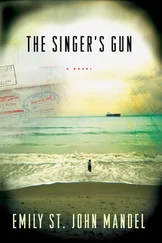

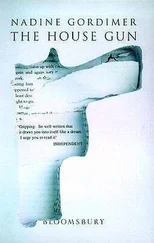

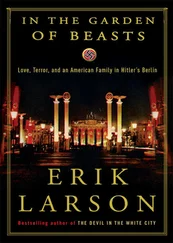

![Ричард Деминг - Whistle Past the Graveyard [= Give the Girl a Gun]](/books/412176/richard-deming-whistle-past-the-graveyard-give-t-thumb.webp)
